King François I of France was born on the 12th of September at Cognac, Aquitaine, France. The only son of Charles d’Orléans, Count d’Angoulême, and his wife, Louise de Savoy, François was a great-great-grandson of King Charles V of France called the Wise (le Sage). A son of the man with Valois and Capetian royal blood in veins, yet not someone who was an immediate member of the French royal family! His father passed away when François was only a boy of 2 summers.
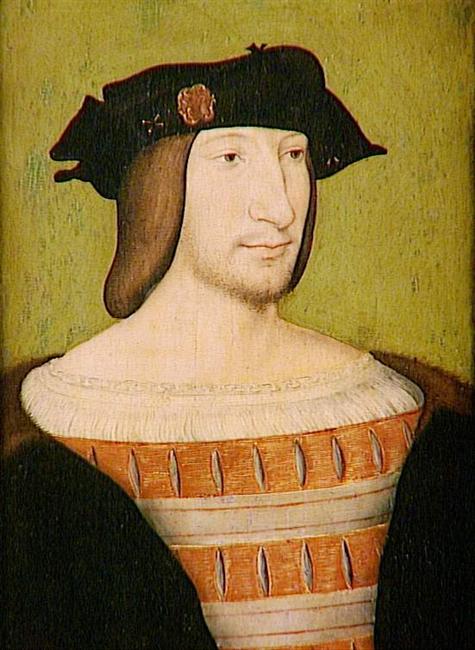
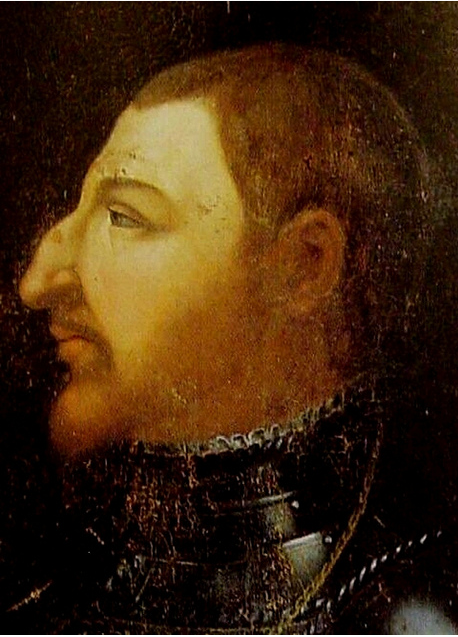
François was not supposed to inherit the French throne because his 3rd cousin, King Charles VIII of France (the only surviving son of Louis XI of France), was still young at the time of his birth. However, as the elder Valois branch of the family became too inbred, Charles VIII and his wife, Anne de Bretagne, experienced reproductive problems and left no surviving issue. Charles was succeeded by King Louis XII, also his cousin, but Louis, who married Anne to keep Brittany as part of the French realm, produced only two daughters over the course of their matrimony. Due to the Salic law that was a remnant of the Merovingian epoch in France, François was declared an heir presumptive when he was 4 years old. Upon his accession in 1515, François became the first King of France from the Angoulême branch of the House of Valois, and he ruled until the death in 1547.
Medieval and Renaissance education was mainly the privilege of nobility. Yet, François was a future monarch, and his forward-looking and smart mother, Louise de Savoy, ensured that her son’s upbringing would be stellar. When her husband was still alive, Louise was allowed to determine her two offspring’s education, and she took her duties seriously. Fascinated by the Italian Renaissance, she passed her love for the arts on to her son and her daughter – François’ elder sister, Marguerite. Louise commissioned special books for her children, including ones on ancient mythology, a dialogue on penance, and many history manuscripts. A history book about ancient Rome, which is now kept in the Bibliothèque nationale de France in Paris, might have been used by François in childhood.
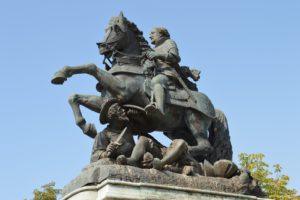
The education of young François was based on the Renaissance humanism, although France was not yet a center of cultural centre in his early youth. His tutors were François Demoulin and the French prelate François Desmoulins de Rochefort, who served as his Latin instructor and was later appointed the monarch’s almoner. Young François also had lessons with Christophe de Longueil (a Brabantian humanist) and many other Italian humanists, invited by his mother to France.
The young man loved the celebrated Italian humanist Francesco Petrarca (Petrarch in English), books of Florentine humanists such as Pico Mirandola and Marsilio Ficino, and those of many other Italian scholars, adoring classical learning. In the 16th century, humanism became the dominant intellectual movement in Europe. The tutors made François so interested in it that François believed from his youth that humanistic studies of the classical culture of ancient Rome and Greece formed an ideal education. He believed that humanism could produce a cultural rebirth after the extremely religious and conservative learning of the Middle Ages, which was focused on the Church teachings. It was François’ faith that his mission was to change France, which at the time of his youth before his ascension, fell behind Italy in her cultural development, to make the country more enlightened.
Robert J. Knecht, Emeritus Professor and one of the most devoted researches of King François I of France, wrote about François I’s education:
“Francis’s education, whatever its shortcomings, was regarded by his contemporaries as unusually enlightened. Florange, who was brought up with Francis, believed that no prince had been better taught, and even as discriminating an observer as Castiglione, author of The Book of the Courtier (Il Cortegiano), was favorably impressed by him when he visited the court of Louis XII.”
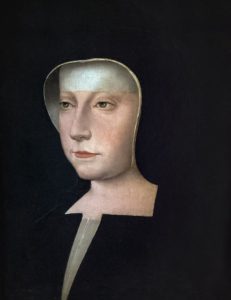
Young François studied mathematics, French grammar, languages (Hebrew, Italian, Flemish, Latin, and Spanish), geography, history, reading, spelling, and writing. He was drawn to the arts and music since his early youth, for his inquisitive mind, thirsty for knowledge, demanded more aesthetic beauty for contemplation. Cardinal Georges d’Amboise, who served King Louis XII during François’ at the time, was responsible for François’ knighthood training, supervising how the young man was taught to handle swords, rapiers, and weapons of all kinds. François displayed his faith in a code of chivalry and principles of gallantry, much like those from the famous book ‘The Book of the Courtier’ by the Italian philosopher Baldassare Castiglione, which would be written much later in 1528.
The humanist cult of beauty became the core component of François’ personality, which would define his actions for the rest of his life. Like a young nobleman, he also spent much time riding, hunting, jousting, as well as being involved in archery, tennis, and wrestling for entertainment. Ironically, François was not good at studying Latin or perhaps simply disliked it, and later, Guillaume Budé (a famous French scholar of the 16th century, who was the first keeper of the royal library at Château de Fontainebleau) wrote his ‘L’institution du Prince’ in the French language, knowing that otherwise François would not be willing to read it. François basked in intellectual splendors from early childhood, which cultivated his art-loving spirit and developed his refined manners.
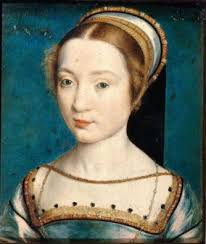
In 1505, King Louis XII of France fell ill and ordered that his eldest surviving daughter, Claude, and her 2nd cousin, François, be married immediately, but Louis soon recovered. Claude was an heiress to the Duchy of Brittany through her mother, Anne de Bretagne (Anne of Brittany). However, Anne desired Brittany to keep its independence, so she refused to sanction the marriage for years, trying to persuade her husband to marry Claude off to some Habsburg prince in order to reinforce the Franco-Spanish alliance and ensure their success in the Italian Wars. I wonder whom Anne wanted to succeed the aging Louis XII then, but there is no answer to this question. Anne wanted her other daughter, Renée, to inherit the duchy, but Louis had other plans for both of his daughters.
On the 9th of January 1514, Anne de Bretagne passed away, and in 4 months after her death, François married Claude de Valois at Château de Saint-Germain-en-Laye, becoming Duke of Brittany through marriage to her. Later, Louis XII remarried young Princess Mary Tudor, but he died at the beginning of 1515 in several months after the wedding. When the court froze in anticipation as they waited whether Mary Tudor was pregnant, the audacious François, perhaps prompted by his mother, performed a cope d’état: he proclaimed himself king regardless of the fact that Mary could be carrying the late king’s child. Given the principle ‘the king never dies’, followed immediately by his eldest son or the nearest male relative in accordance with the French laws of the Ancien Régime, François’ accession is not illegal. It would have been unlawful only if Mary had birthed to a son, and François had refused to step aside. François and Claude were crowned at Reims on the 25th of January 1515.

Charles VIII and Louis XII were involved in the Italian wars for most of their reigns, trying to press the old Valois claims to the kingdom of Naples and the Duchy of Milan. While these two monarchs did not concentrate on intellectual movements, the French aristocracy became familiar with the Italian Renaissance. An exceedingly intelligent and impeccably educated man, François resolved to make Renaissance spirits bloom in his kingdom, just as they did in Italy. His contemporaries describe François as a true Renaissance man influenced by progressive ideas that originated in Italy. François I is rightfully considered the first Renaissance King of France and the founder of the French Renaissance, and his reign saw France make immense cultural advances. He was a contemporary of King Henry VIII of England, his bitter rival and at times his fickle ally, but Henry did not manage to make England as cultured and Renaissance-oriented as France became under François’ rule.
François patronized many celebrated artists, including Andrea del Sarto and Leonardo da Vinci, who lived in France during his last years. Leonardo brought to France some of his notable works, including the Mona Lisa, Sainte Anne, and Saint Jean Baptiste, which are now owned by the Musée du Louvre. As Leonardo was an old man when he relocated to France in 1515, the Maestro painted little, but he still actively worked for the court, frequently creating elaborate decorations projects for feasts. Leonardo focused on his engineering and architectural projects: the Maestro was a scientist, an artist, and a man with diverse interests ahead of his time, a man whom we would now call a capable stage director who knew how to please an audience. Da Vinci’s original automaton is lost, but the animal was recreated at Château du Clos Luce, which was his residence in France located close to Château d’Amboise, and which is today on display there. François and Leonardo appear to have developed a close relationship, and the monarch learned a great deal from the old artist.

In his early reign, François favored châteaux in the Loire Valley because these palaces exhibited more Italian architectural elements compared to those in Paris’ vicinity. The Loire Valley became a haven for humanism and new artistic ideas. Inspired by majestic architectural styles of the Italian Renaissance, François constructed many magnificent buildings. Although Louis XII had also been an admirer of Italian art, François had parts of Château d’Amboise refurbished and had the palace decorated with a series of stunning Italian frescoes and his personal emblems – a salamander. In 1498, Louis XII had moved to Château de Blois together with his court, having constructed a new wing in a mixture of Gothic and Renaissance styles – it is now known as ‘Louis XII wing’. In 1515, the year of his accession, François I initiated the construction of a wing on the north side of the courtyard in a blend of Gothic and Renaissance style. The most striking feature of this project is the polygonal external staircase tower, decorated with gargoyles, statues in niches, and antiquity-inspired ornamentations, which is admired by all modern tourists visiting Blois.
At François’ cosmopolitan court, there were Flemish, Italian, and French artists such as Jean Clouet, Leonardo da Vinci, Domenico da Cortona, Sebastiano Serlio, Niccolò dell’Abbate, Francesco Primaticcio, Rosso Fiorentino, and many others. A miniaturist and painter, Jean Clouet was a native of the Low Countries, but he moved to France and worked for the Valois family and aristocrats. Jean and his son, François Clouet, who was also a painter, created the famous portraits of King François and of Queen Marguerite de Navarre. Jean’s brother, called Clouet de Navarre, served Marguerite. In addition to Fiorentino and Primaticcio, a team of Italian designers and craftsmen, including Giacomo Barozzi da Vignola, Sebastiano Serlio, and Benvenuto Cellini, received commissions at Château de Fontainebleau. Benvenuto Cellini, who was an Italian goldsmith, sculptor, draftsman, and musician, produced famous medals for François: for example, ‘Hercules and the Nemean Lion’ in gold repoussé work and ‘Atlas supporting the Sphere’ in chased gold, as well as many others.
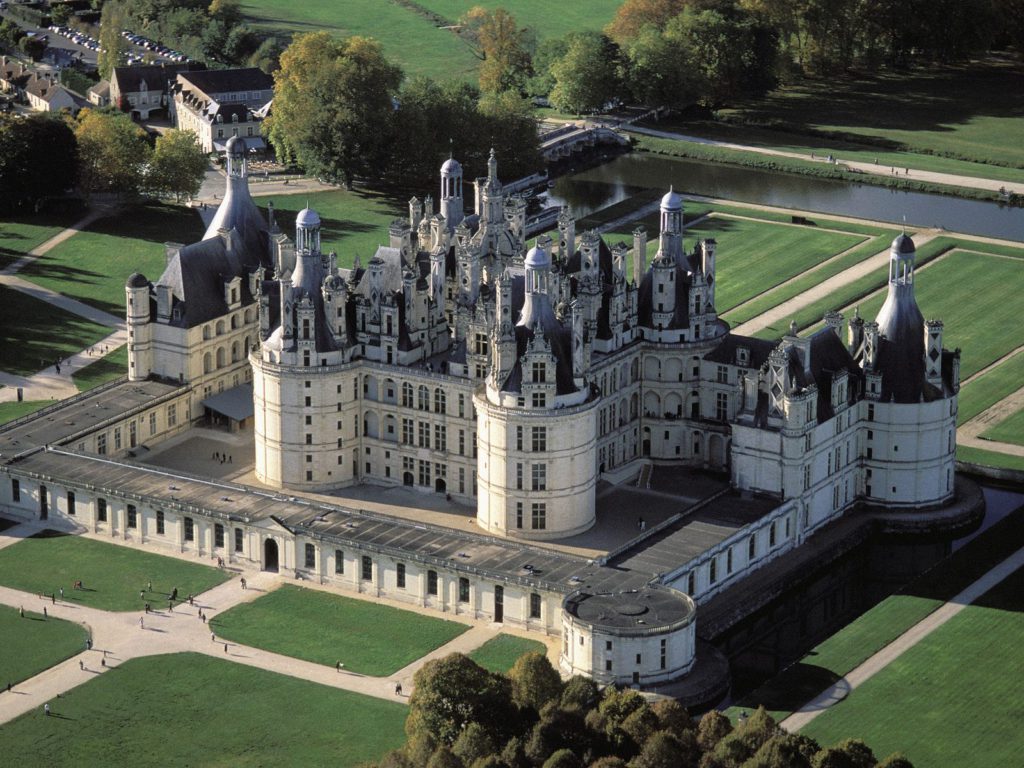
The Italian architect Domenico da Cortona, known as the Boccador, was in service to François I from the 1510s. Boccador enthusiastically embarked on the k projects, including the construction of ‘the François I wing’ – it is known so in France now – at Blois. Although the Boccador was involved in designing Château de Chambord, the responsibility for the design was also given to Da Vinci. As Leonardo died in 1519, the actual construction of Chambord was supervised by the French architect Pierre Nepveu, as well as several Italian specialists such as Pietro Caccia and Dominique da Cortona. Built between 1519 and 1527 in Sologne, on the banks of the Cosson River, Château de Chambord was one of the most amazing projects of young King François. Later in his reign, François had Château de Fontainebleau renovated with the help of talented Italian artists such as the Florentine artist Rosso Fiorentino and the Bolognese artist Francesco Primaticcio. These artists were running for the First School of Fontainebleau, whose works exhibited the extensive use of stucco, including moldings, picture frames, and frescos, as well as an elaborate system of allegories and mythological iconography. The monarch also rebuilt the ancient residence of French kings – Palais du Louvre, transforming it from a medieval fortress into a marvelous palace of Renaissance splendor.
The towns, which benefited from the court’s presence, became drivers of change. For instance, a number of wealthy bourgeois families from Tours such as the Briçonnet and the Beaune-Semblançays, enriched the Loire Valley with the nicest Renaissance buildings. Aristocratic châteaux such as Château d’Azay-le-Rideau (renovated by Gilles Berthelot, the Mayor of Tours and Treasurer-General of the royal finances) and Château de Villandry (built by Jean le Breton, one of François’ finance ministers), and hundreds of others gravitated towards royals palaces in their style.

The construction of numerous Renaissance churches at the initiative of the noble class and the rich bourgeoisie throughout the country added to the artistic splendor in France. Because of the king’s love for the region, architectural projects at first developed mainly in the Loire Valley, where one can follow the evolution of the French Renaissance from its beginnings to its apogee. The older François started his projects in other corners of his realm, and more sumptuous palaces appeared: Château de Villers-Cotterêts erected by the architect Philibert Delorme in 1528-30, Château de Madrid in the Bois de Boulogne, and the renovated Château de Saint-Germain-en-Laye, where François installed his children’s household. Many chapels were constructed by the nobility in the ornamental style. The French sculptors Jean Goujon and Germain Pilon had many lucrative commissions.
Françoise and his sister, Marguerite, were surrounded by poets, composers, and humanists. Among poets there were Clément Marot, François’ friend, and Mellin de Saint-Gelais, who created the first sonnets in French, as well as Joachim du Bellay, Pierre de Ronsard, Noël du Fail, and Bonaventure des Périers. Their favorite composes were Claude de Sermisy and Clément Janequin, who were both the most renowned composers of French chansons and sacred music in the early 16th century. Many of Clément Marot’s poems and odes were sang at court under the music of Sermisy and Janequin, who personally played for the Valois siblings. François and his sister adored François Rabelais’ masterpieces Pantagruel, Gargantua, and their sequels, each written in a satirical style. The humanists Jacques Lefèvre d’Étaples and Jacques Peletier du Mans were within their inner circle. Marguerite of Navarre wrote her own work – ‘Heptaméron’, one of the masterpieces of the century. The tragic novellas, or histoires tragiques of Matteo Bandello fascinated the royal court. The painter Jean Fouquet of Tours achieved realistic portraits and produced remarkable illuminated manuscripts, although François, who adored beautiful Books of Hours, often ordered them for himself and his relatives from Italy.

François worked at improving the royal library, which had first been founded by Charles V of France. François employed agents in Italy to search for rare books and manuscripts, purchasing them from private collections or impoverished noble families. François is sometimes called ‘a man of letters’, and his court was the most splendid and most cultured in Europe. Some French historians call François I of France as ‘the French Lorenzo Il Magnifico’ because this monarch was a true godfather of French Renaissance, which would mature during the reign of his son – Henri II of France.
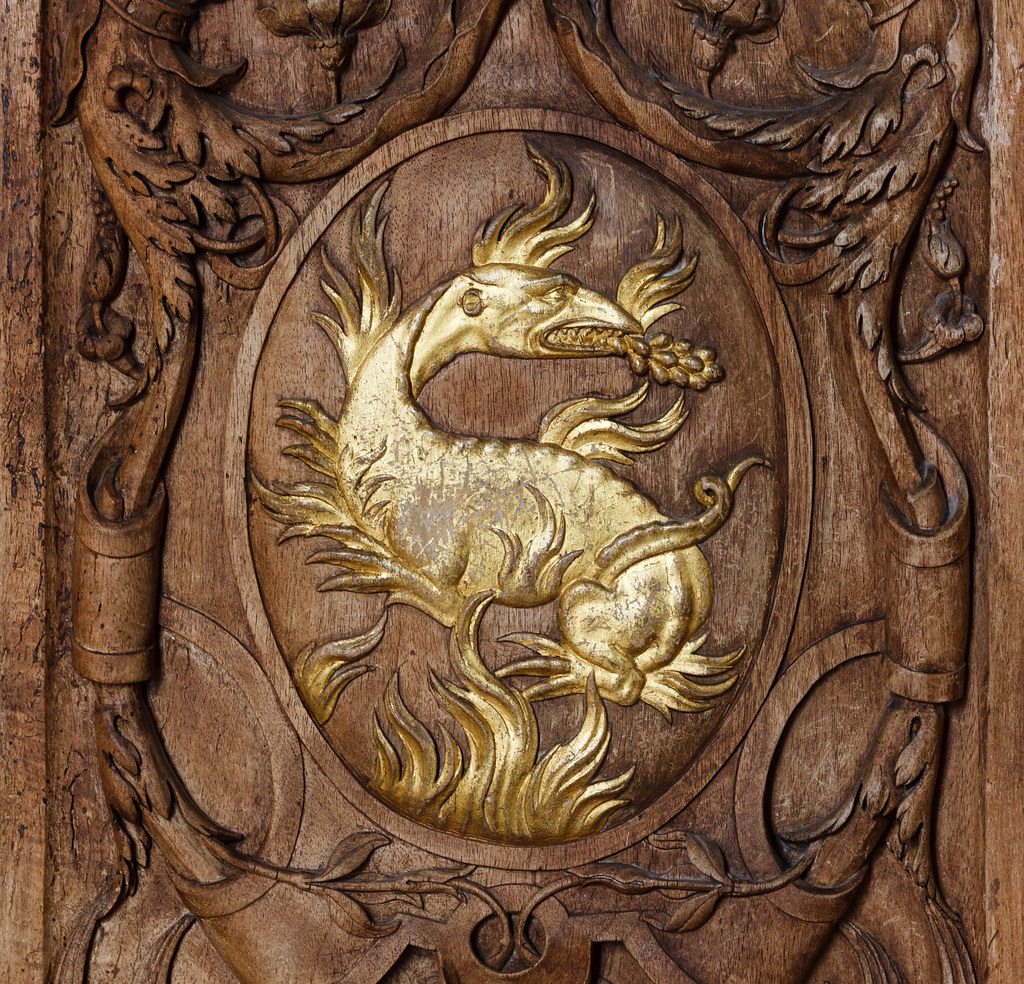
The Valois Renaissance court was nomadic: François traveled with his court from one of his castles to another. The sovereign’s household was divided into departments. The queen and king had their own households. The departments were the hôtel, which fed the royal family and their entourage, the chambre or royal bedchamber, and the chapel. The gentlemen of the chamber were the king’s companions, enjoying free access to his presence, but they served in rotation. Another department organized the royal hunts. The Scots guard, established by Charles VII the Victorious (le Victorieux), guarded the king who personally employed his captain and other guards. The Grand Master controlled the court, and for more than 30 years, Anne de Montmorency held this office; one of the richest and most powerful noblemen in France, he also became Constable of France.
François was a flamboyant king, labeled a notorious womanizer. Nevertheless, some of the stories about the king’s escapades are exaggerated. For example, there was a tale that he had a mistress at the age of 10, and that is clearly not true. Another story is that he built Chambord to be near his paramours. Many of these tales were later invented by the authors associated with the English and the House of Bourbon, who wanted to blacken the monarch’s reputation. The beautiful, elegant, and impeccably educated Françoise de Foix, Countess de Châteaubriant, was the king’s first official maîtresse-en-titre, who attracted his attention in the mid-1510s and remained the main object of his affection until the disastrous defeat of the French at Pavia in 1525 and her royal lover’s captivity.
Queen Claude of France, the monarch’s first wife, was a quiet, noble-minded, sweet, and pious woman who was satisfied with her private and maternal role. Claude was not very beautiful and was quite fragile in her stature, so François was not probably attracted to her as much as he was to his pretty mistresses. During her 10-year marriage to François, Claude was almost always pregnant or recovered from labor and/or miscarriages, if she had any. She was said to be badly lame in both hips, although it can be exaggerated. In contrast to Claude, François was a handsome and energetic man not satisfied with only having his pious wife for his carnal needs. Contemporaries described him:
“He [François] was very noble, and, in spite of a long and large nose, extremely handsome, he was a sturdy and valiant knight, affable, courteous, a brilliant talker and a facile poet.”

Claude withdrew from the extravagant French court and spent most of the time at Amboise and Blois. She tolerated her husband’s infidelities in silence and did her duty – bearing his children and heirs to the throne. She died on the 20th of July 1524 after a brief illness, at the age of just 24. After Claude’s death, François was grief-stricken despite the lack of love on his part, and he mourned for her. In 1530, François married Eleanor of Austria from the House of Habsburg, who was the elder sister of Emperor Charles V; he was engaged to her during his captivity in Spain. His second union was a disaster: François was unable to overlook his hatred for the Habsburgs and ignored his wife for the most part, not wishing to sire children on Eleanor and preferring to be with his second official and long-term maîtresse-en-titre – Anne de Pisseleu d’Heilly, Duchess d’Étampes. Although Anne de Pisseleu seems to have been the love of François’ life, the king also dallied with other women, for example with Claude de Rohan-Gié, because he loved ladies who were captivated by his charm.
François firmly believed in absolutism. He wanted to rule the kingdom by himself, centralizing power in the royal hands and restricting that of the French nobility. He was the first King of France to be addressed ‘Your Majesty’, a title previously held by Holy Roman Emperors. From the beginning of his reign, François was rather authoritarian in his acts and pronouncements. Considering himself the absolute ruler of his realm, he could depart from existing practices, institutions, and methods of government. Chancellor Antoine Duprat, who denied that the Estates General had any right to oppose the monarch, helped his sovereign enforce his laws and advocated absolute monarchy.

However, François allowed others to influence him. His beloved mother, Louise de Savoy, dedicated herself to helping her son rule, giving him wise counsel. The king’s sister, Marguerite, demonstrated the brilliance of her mind and was devoted to her brother and France. Until Louise’s death in 1531, François, his sister, and his mother ruled France together, and poets glorified the Valois powerful trio as ‘Holy Trinity’. The king had his own favorites, whom he elevated to favor and kept in good graces until he didn’t need them any longer or found replacement for them. In his early reign, Chancellor Antoine Duprat, Secretary Florimond Robertet, and the two Gouffiers, Boisy and Bonnivet, were his favorites. Anne de Montmorency and Philippe de Chabot always remained close to their sovereign who was their boyhood friend; Claude d’Annebaut and Cardinal de Tournon earned the king’s favor later. While Françoise de Foix was not politically active, Anne de Pisseleu d’Heilly often advised her lover on various matters. François valued female intelligence and admired it, unlike many other men and rulers, and clever women always played an important role in his life.
François significantly expanded royal power at the expense of the nobility by absorbing into the royal possession the last remaining great semi-independent fiefdoms: the Duchy of Bourbon from 1523; the lands of Alençon from 1525; and the lands of Albret by the marriage of his sister Margot to Henry II d’Albret, King of Navarre, in 1527. Finally, in 1529, the lands of Burgundy were included into the realm by a special royal decree. The Duchy of Brittany, administered by François’ first wife, Claude, was brought under the monarch’s direct administrative control in 1535. Yet, some French lands were still ruled by autonomous dukes, and François never forgot about them.
The ruler implemented many reforms directed at centralization in the kingdom. François was the first monarch who brought the sale of all government offices under the strict control of royal officials to get the profit for the Crown. To unite the country and his subjects, in 1530, he declared French the national language, and in the same year, he opened the Collège des Trois Langues, or Collège Royal. The Ordinance of Villers-Cotterêts of 1539 made French the administrative language in the whole kingdom in replacement for Latin after French had proved to be the most popular written form. Yet, despite the high level of centralization, François was not an absolute monarch.
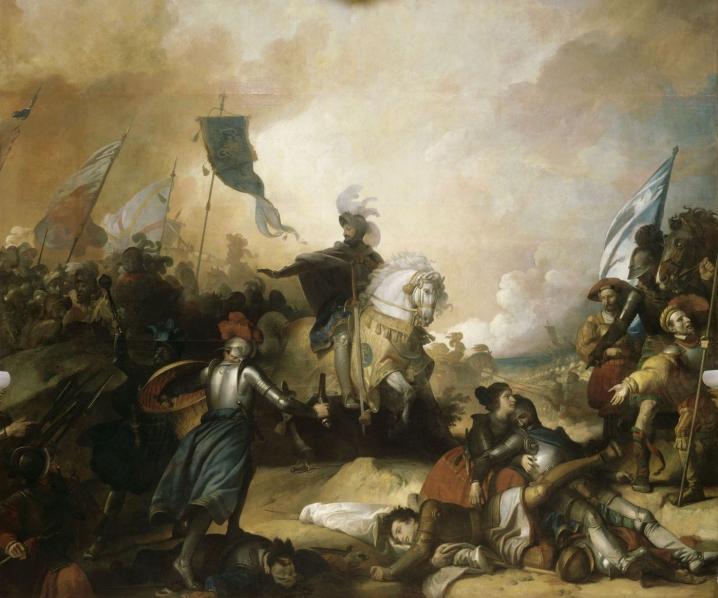
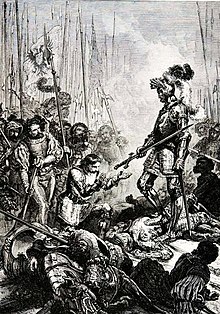
The foreign policy of François I was questionable and not always successful. During the greater part of his reign, the monarch struggled with Emperor Charles V. The king led his army at Marignano in 1515 and won the battle that resulted in the capture of Milan. This success gained him reputation of the Knight-King and that of a powerful prince in Europe. In 1519, in spite of his mother’s wise counsel not to do so, François competed with Charles V for the Imperial crown, but he lost the battle. Striving to have allies against the emperor, François attempted to arrange an alliance with Henry VIII of England at the famous Field of Cloth of Gold in 1520 but, but no stable alliance emerged. One of the hallmarks of his reign is the Franco-Ottoman alliance established in 1536 with the Muslim Sultan Suleiman the Magnificent, which was a controversial move for a Christian king at the time.
In the Italian campaign of 1525, François fought with a foolhardy bravery, but he suffered his most devastating defeat at the Battle of Pavia on the 24th of February 1525, when his horse was killed underneath him, and as a result, he was captured by the enemy. It was a catastrophe for the king and his country! François was held captive in Madrid for more than a year in awful conditions and fell seriously ill, but he recovered after he had been nursed back to life by his courageous and devoted sister, Margot, who rushed to Spain to her brother to negotiate his release with Charles V.
In a letter to his mother, the monarch wrote in those awful days:
“Of all things, nothing remains to me but honor and life, which is safe.”
In May 1526, François was eventually released and returned home in exchange for delivering into the Spanish custody his 2 sons – Dauphin François and his second son, Henri, boys of 8 and 7 years old, respectively. The princes suffered in Madrid in terrible conditions for several years while France was collecting an astronomic ransom for them; they finally returned home in 1530. To release his sons, François had to make concessions to the emperor, one of them his forced marriage to Eleanor of Austria. François was compelled to recognize the independence of the Duchy of Burgundy. All of the emperor’s demands were officially fixed in the Treaty of Madrid of 1526. When he was free, François repudiated the agreement. None of the monarch’s future attempts to conquer Italy were particularly successful, although the French troops invaded and captured Savoy and Piedmont.
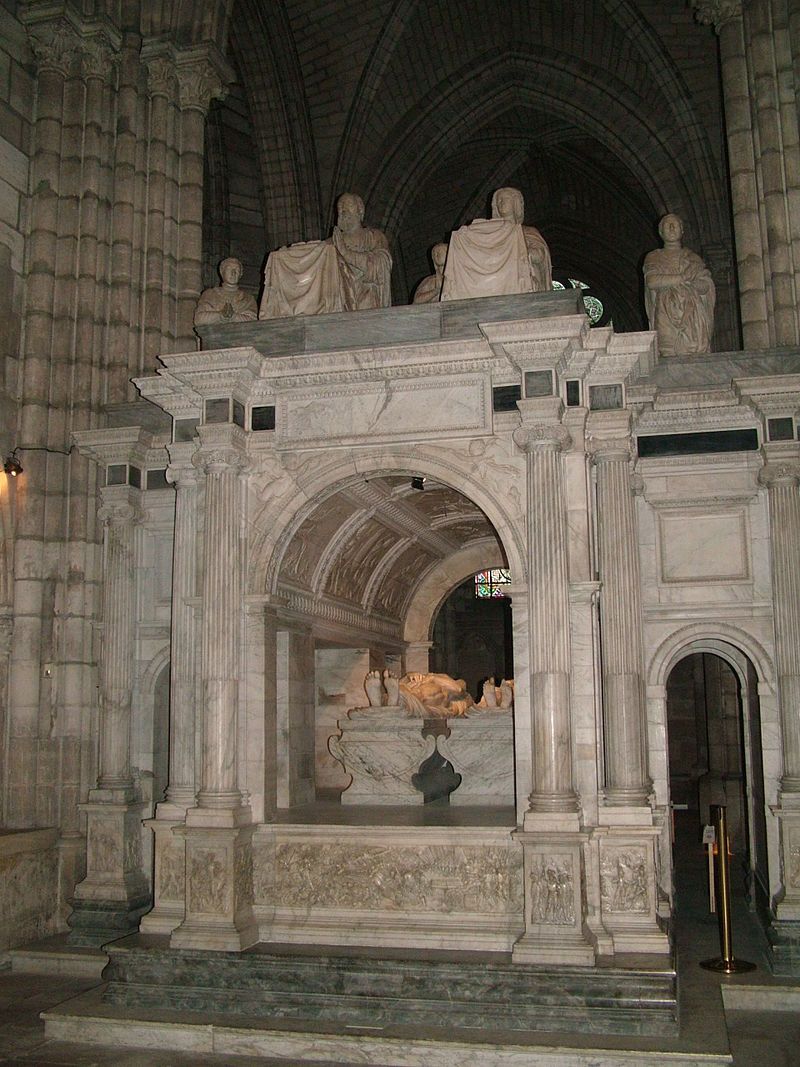
King François I of France died on the 31st of March 1547, most likely of a disease of the urinary ducts. He was succeeded by his son – Henri II of France. Nowadays François I is celebrated and commended for his immeasurable contribution to French culture. François cocooned France into an aura of artistic prominence, which is his major contribution to his country’s history. Every time modern tourists go to the Loire Valley and admire the gorgeous French châteaux and the arts, they should thank King François I for his artistic attainments, while also thanking King Louis XIV of France for being the founder of the French baroque and partly of the French rococo.
All images are in the public domain.
Text © 2020 Olivia Longueville

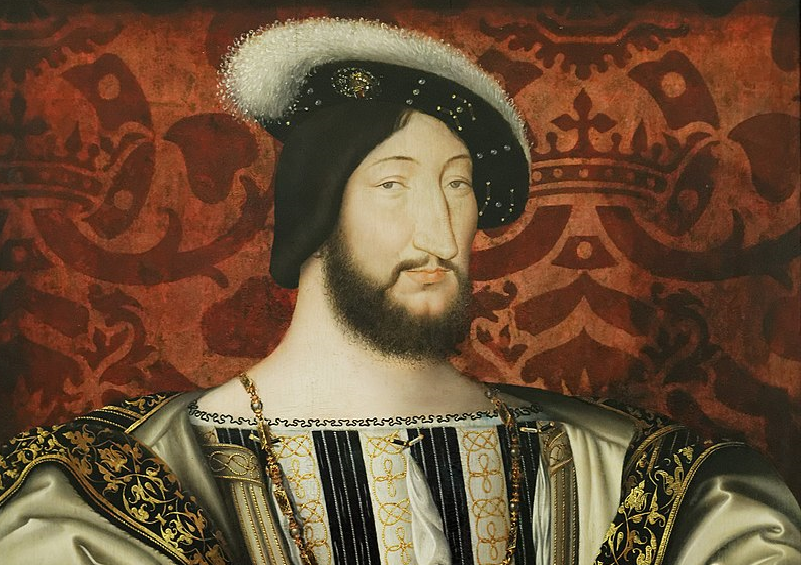




A truly in-depth article on a marvelous site. Thank you, Olivia Longueville. What you have written is a great use to me for the essay on Leonardo and François on my site https://continentalriffs.substack.com/
Thank you very much, James. I will check your website soon!